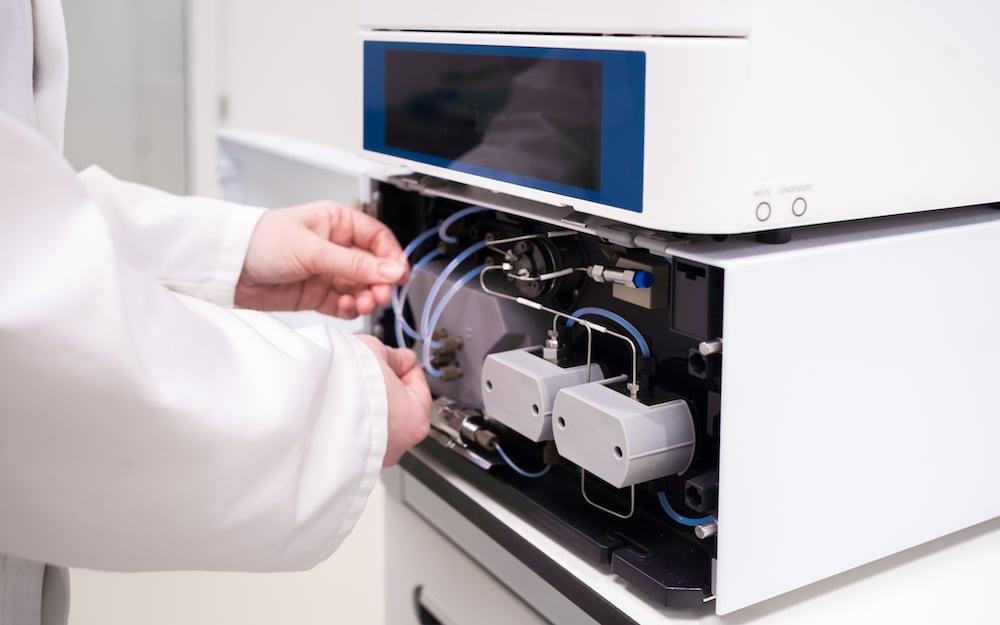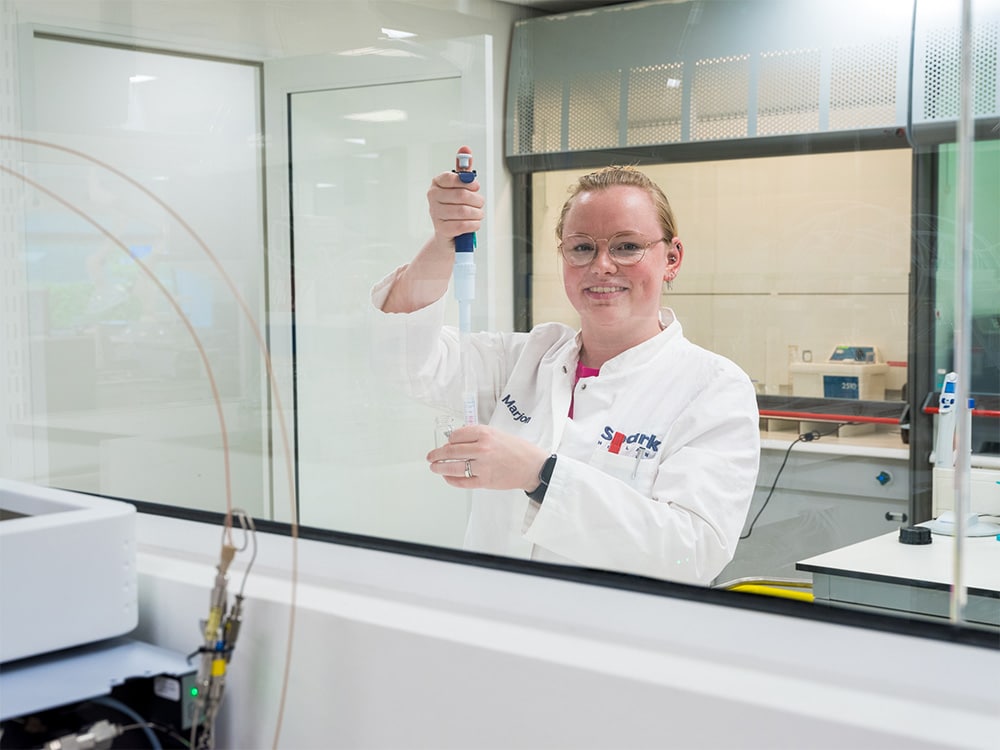Pump technology for (U)HPLC systems
Choosing a pump for your (U)HPLC system depends foremost on application requirements, e.g. flow accuracy and pressure pulsation, but also on budget. Over the years, pump technology has evolved, resulting in improved specification and robustness. In brief, a distinction is made between two types of technology: linear and cam driven pumps. A solid understanding of how the different technologies work will help you choose the optimal pump.
The choice of a cam driven or linear driven mechanism depends on the application, required accuracy, budget, flexibility and maintenance requirements.
To understand the characteristics and requirements for modern (U)HPLC pumps, different pump technologies will be discussed in this article.
Solvent delivery
A solvent delivery pump is a critical part of each (U)HPLC system. The pump delivers mobile phases of a specified composition at a precise flow rate from the autosampler to the column and detector. Pulseless delivery of solvent is essential for reproducible analyte separation and retention times. In short, each pump is equipped with one or two pistons which aspirate the solvent from the bottle and dispense it towards the analytical system. The pistons are driven by a drive train, typically powered by an electric motor. The mechanism includes a circular cam or screw drive to transform rotations into linear motion.
Single piston cam driven pumps
The single-piston reciprocating pump was, next to the syringe pumps, the best option for HPLC systems in its early days. Single-piston pumps are compact and low-cost. However, they have large pulsation in flow and pressure due to the recharge cycle of the piston. The oval shape of the cam ensures that suction is as short as possible, resulting in a short drop in flow. However, because of the refill step the flow rate is not continuous.
For simple analyses and applications where a small variation in retention time is not a concern and less demands are placed on flow rate accuracy, a single-piston pump will suffice. Most HPLC applications, however, require an accurate, constant flow rate. The deficiencies of the single-piston pump were solved in the 1980’s with the development of the dual-piston pump.
Dual piston cam driven pumps
Dual piston pumps are often driven by a single motor through a common circular cam, moving the pistons 180° out of phase. The opposing movement of the pistons allows one piston to pump while the other is refilling. This results in a combined flow with significantly less pulsation compared to the single-piston pump. This type of solvent delivery pump became the gold standard in HPLC until the linear driven pumps were introduced in the early 2000’s with the first UHPLC systems. However, the cam driven pumps are still the main choice for many conventional HPLC systems because of their robust and proven technology. The main advantage of this pump technology is the large flow rate range (0.01 – 10 mL/min) without gear change. By increasing the piston diameter, the flow can even be further increased to flow rates up to 100 – 200 mL/min, as used in the preparative HPLC.
As both pistons are placed in parallel, each pump head will need both an inlet and outlet check valve. For gradient systems it means a total of 8 check valves is used, making troubleshooting sometimes a challenge.
Dual piston linear driven pumps
With the introduction of sub 2 µm particle columns the demand for very precise flow rate and minimal pressure pulsation increased. This led to the development of the first UHPLC systems, where a linear driven pump was used instead of the cam driven pump. This new pump technology is positioning the pistons in series, whereas the cam driven pump is using a parallel piston concept.
The independently controlled piston drives and pressure sensors make this pump technology more advanced. For example, real time compensation for solvent compressibility or pressure pulsation is possible, resulting in superb flow and pressure stability performance. In contrary to cam driven pumps, a pulse dampener is no longer required.
The linear driven pumps are capable of delivering very accurate and precise flow rates, even at low flow rates. The typical flow rate range for linear driven pumps is 0.001 – 2 mL/min. A benefit of the good performance at low flow rate is that 2 linear driven pumps are providing excellent gradient reproducibility.
Because of the in-series configuration of the pistons, the number of check valves can be reduced to 4 for a gradient system. In combination with the independent pressure sensors, troubleshooting and maintenance costs can be minimized.
Cam or linear?
The choice of a cam driven or linear driven mechanism depends on the application, required accuracy, budget, flexibility and maintenance requirements.
Find out all about our commitment, lead times, deadlines and cost of goods sold.
Experience the way we work and cooperate in order to reach your business goals.
Always going that one step further
In depth training ensures that your staff are able to service and maintain instruments and systems, based on clear procedures, using dedicated preventive maintenance kits and spare parts. And of course, our service team is always available to help.

